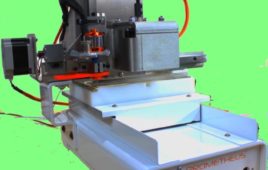
The Tensor Processing Unit. Image credit: Google
On Wednesday, Google took a look into the future with the opening keynote address at the annual I/O developer conference. They announced several products and services we’ll see rolled out in the next year or so, as well as revealing one which was already in use: Tensor Processing Unit, an ASIC built specifically for machine learning and used to power Google’s datacenters as well as the go-playing AI AlphaGo.
A board with the Tensor Processing Unit can be slotted into a hard disk drive slot on Google’s data center racks and enables them to perform more operations per second, bringing in intelligent results more quickly. Because it’s tailored to machine learning, it is also more tolerant of reduced computational precision, and therefore requires fewer transistors per operation.
“TPU is an example of how fast we turn research into practice — from first tested silicon, the team had them up and running applications at speed in our data centers within 22 days,” Google wrote in a blog post.
The TPU had been secretly in use before its announcement at I/O. It was powering Street View behind the scenes in order to improve the accuracy of the maps, and improved the relevancy of search results with RankBrain.
“We’ve been running TPUs inside our data centers for more than a year, and have found them to deliver an order of magnitude better-optimized performance per watt for machine learning,” Google wrote. They claim that this jumps three generations of Moore’s Law, which states that the number of transistors in a high-end circuit doubles about every two years.
TPUS will also be used to boost developer software like Google’s TensorFlow and Cloud Machine Learning.
At the I/O keynote Google also discussed changes to Android, announced a messaging app called Allo, and a personal assistant and smart home hub similar to Amazon’s Alexa. They’re also bringing a virtual reality platform called Daydream to Android devices, although the headset and controller are still in the preliminary design stages.
They’re also looking for suggestions for the name of the next generation of Android. They’re on top of things and have already said no to “Namey McNameface.”
Filed Under: Virtual reality, Rapid prototyping




